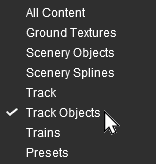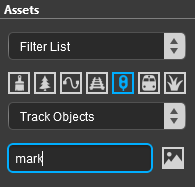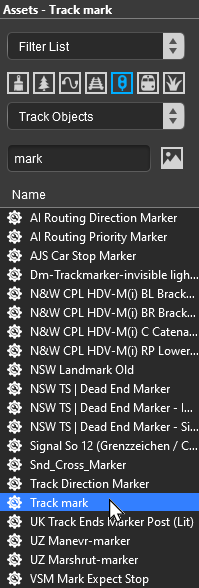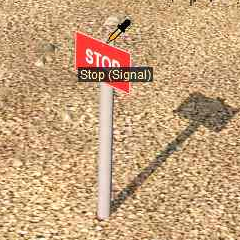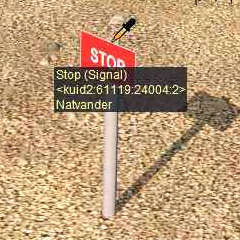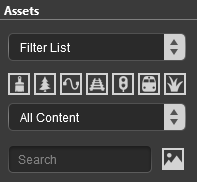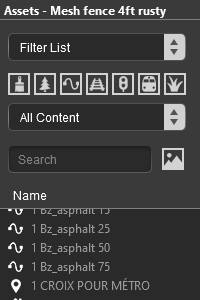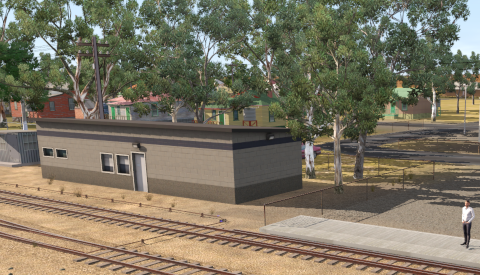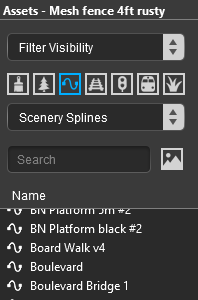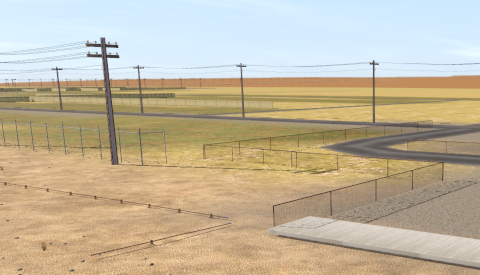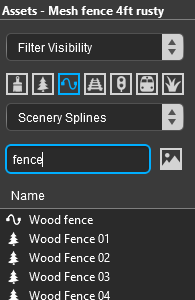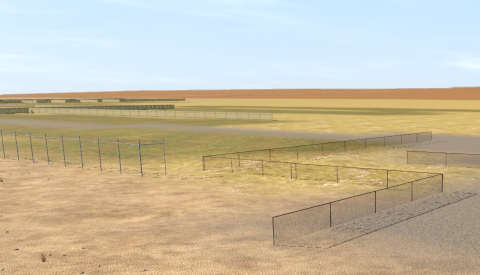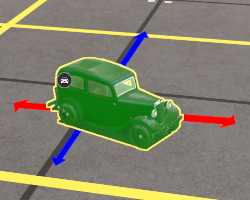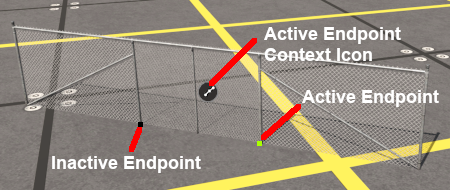How to Use S20 Tools
(→The Free Move Tool) |
|||
| Line 989: | Line 989: | ||
</table> <!-- END Nav Buttons Table --> | </table> <!-- END Nav Buttons Table --> | ||
| − | The '''Free Move Tool''' is used to move objects around the route in the XY (horizontal) directions only.<br> | + | ='''The Free Move Tool'''= |
| + | |||
| + | <table width=700> | ||
| + | <tr valign="top"> | ||
| + | <td width=700> | ||
| + | <table width=500> | ||
| + | <tr valign="top"> | ||
| + | <td width=40>[[image:S20_FreeMoveToolIcon.png|link=]]</td> | ||
| + | <td width=460>'''Keyboard Shortcut:''' <span style="color: white; background-color: black; font-weight: 700; font-size: 15px;"> S </span></td> | ||
| + | </tr> | ||
| + | </table> | ||
| + | </td> | ||
| + | </tr> | ||
| + | </table> | ||
| + | |||
| + | The '''Free Move Tool''' is used to move objects around the route in the '''XY''' (horizontal) directions only.<br> | ||
This tool does not need any other palettes. None of the controls in the '''Tool Options Palette''' are active. However it will display position data in the '''Info Palette'''. If this palette is not visible on the screen then refer to [[image:PageLink.PNG|link=]] '''[[#Notes_Palettes|Notes: Palettes]]''' at the top of this document.<br> | This tool does not need any other palettes. None of the controls in the '''Tool Options Palette''' are active. However it will display position data in the '''Info Palette'''. If this palette is not visible on the screen then refer to [[image:PageLink.PNG|link=]] '''[[#Notes_Palettes|Notes: Palettes]]''' at the top of this document.<br> | ||
| − | + | <span style="font-weight: 700; font-size: 15px; color: white; background-color: black;"> For Scenery Objects </span><br> | |
<table width=700> | <table width=700> | ||
<tr valign="top"> | <tr valign="top"> | ||
<td width=250>[[image:FreeMoveToolCar_S20.png|link=]]</td> | <td width=250>[[image:FreeMoveToolCar_S20.png|link=]]</td> | ||
| − | <td width=450>Use the mouse ( | + | <td width=450> |
| + | <table> | ||
| + | <tr valign="top"> | ||
| + | <td>[[image:DotPoint1.JPG|link=]]</td> | ||
| + | <td>Select the '''Free Move Tool'''.</td> | ||
| + | </tr> | ||
| + | <tr valign="top"> | ||
| + | <td>[[image:DotPoint2.JPG|link=]]</td> | ||
| + | <td>Select ('''Left''' click on) the object.</td> | ||
| + | </tr> | ||
| + | <tr valign="top"> | ||
| + | <td>[[image:DotPoint3.JPG|link=]]</td> | ||
| + | <td>Use the mouse ('''Left''' button held down) to drag the object in any '''horizontal''' ('''XY''') direction.</td> | ||
| + | </tr> | ||
| + | </table> | ||
<br> | <br> | ||
<table bgcolor=#000000 width=450 cellpadding=2> | <table bgcolor=#000000 width=450 cellpadding=2> | ||
| Line 1,016: | Line 1,045: | ||
</table> | </table> | ||
| + | <span style="font-weight: 700; font-size: 15px; color: white; background-color: black;"> For Spline Objects </span><br> | ||
| + | |||
| + | <table width=900> | ||
| + | <tr valign="top"> | ||
| + | <td width=450>[[image:FreeMoveToolSpline_S20.png|link=]]</td> | ||
| + | <td width=450> | ||
| + | <table> | ||
| + | <tr valign="top"> | ||
| + | <td>[[image:DotPoint1.JPG|link=]]</td> | ||
| + | <td>Select the '''Free Move Tool'''.</td> | ||
| + | </tr> | ||
| + | <tr valign="top"> | ||
| + | <td>[[image:DotPoint2.JPG|link=]]</td> | ||
| + | <td>Select ('''Left''' click on) the spline point to be moved. This will be shown as '''green''' meaning '''active'''.</td> | ||
| + | </tr> | ||
| + | <tr valign="top"> | ||
| + | <td>[[image:DotPoint3.JPG|link=]]</td> | ||
| + | <td>Use the mouse ('''Left''' button held down) to drag the spline point in any '''horizontal''' ('''XY''') direction.</td> | ||
| + | </tr> | ||
| + | </table> | ||
| + | <br> | ||
| + | <table bgcolor=#000000 width=450 cellpadding=2> | ||
| + | <tr valign="top"> | ||
| + | <td> | ||
| + | <table bgcolor=#ffffb0 width=446 cellpadding=2> | ||
| + | <tr valign="top"> | ||
| + | <td>[[image:NotePad.PNG|link=]]</td> | ||
| + | <td>The spline point will be '''fixed''' at its original height.</td> | ||
| + | </tr> | ||
| + | </table> | ||
| + | </td> | ||
| + | </tr> | ||
| + | </table> | ||
| + | </td> | ||
| + | </tr> | ||
| + | </table> | ||
| Line 1,043: | Line 1,108: | ||
</table> | </table> | ||
| − | The '''Fine Adjustment Tool''' is used to make fine adjustments (XYZ axis, rotation, tilt) to objects in the route. | + | The '''Fine Adjustment Tool''' is used to make fine adjustments (XYZ axis, rotation, tilt) to objects in the route.<br> |
| + | |||
| + | This tool does not need any other palettes. None of the controls in the '''Tool Options Palette''' are active. However it will display position data in the '''Info Palette'''. If this palette is not visible on the screen then refer to [[image:PageLink.PNG|link=]] '''[[#Notes_Palettes|Notes: Palettes]]''' at the top of this document.<br> | ||
| + | |||
<table> <!-- BEGIN Nav Buttons Table --> | <table> <!-- BEGIN Nav Buttons Table --> | ||
<tr valign="top"> | <tr valign="top"> | ||
| Line 1,069: | Line 1,137: | ||
</table> | </table> | ||
| − | The '''Marquee Tool''' is used to select areas of the route. | + | The '''Marquee Tool''' is used to select areas of the route.<br> |
| + | |||
| + | This tool does not need any other palettes.<br> | ||
<br> | <br> | ||
Revision as of 10:56, 9 January 2023
The information in this Wiki Page applies to Surveyor 2.0 (S20) as found in Trainz Plus.
This document is under development
|
|
|||||||||
The Tools Palette
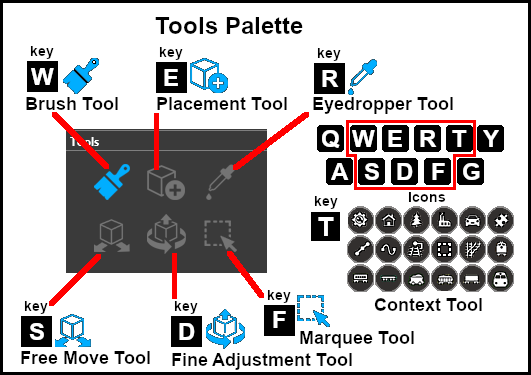 |
|
|||||||||||||||||
The Brush Tool
The Brush Tool is used for painting the route. It can:-
When selected, the Brush Tool will show two drop down menu lists. |
 |
| The first drop down menu will set the Brush Target, the type of brush. The Targets are:- |
|||||
|
 |
|
|||
Ground Height
This brush tool uses the Tool Options Palette. If this palette is not visible on the screen then refer to Notes: Palettes at the top of this document.
| When the Ground Height Target is selected, the second drop down box will give a choice of several Ground Height tools. The choices are:- |
|
|
 |
| The available brush tool options are shown in the Tool Options Palette with a Gold coloured icon next to their names. Those options that have their icon greyed out will be ignored, but they can still be edited. | ||||||||||||||||||||||||||||||||||||
Height Up/Height Down  |
Set Height  |
Grade 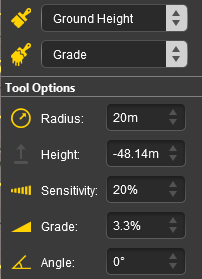 |
|
|||||||||||||||||||||||||||||||||
|
Ground Texture
This brush tool uses the Tool Options Palette. If this palette is not visible on the screen then refer to Notes: Palettes at the top of this document.
When the Ground Texture Target is selected, the second drop down box will be disabled - there are no brush texture tool choices.
The available brush tool options are shown in the Tool Options Palette with a Gold coloured icon next to their names. Those options that have their icon greyed out will be ignored, but they can still be edited.
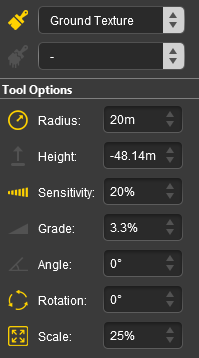 |
|
||||||||||||||||||||||||||||
|
Scrapbook Data
This brush tool uses both the Tool Options Palette and the Scrapbook Palette. If these palettes are not visible on the screen then refer to Notes: Palettes at the top of this document.
| The Scrapbook Brush When the Scrapbook Data Target is selected, the second drop down box will give a choice of two Scrapbook Data tools. |
|
|
|
|
| The available brush tool options are shown in the Tool Options Palette with a Gold coloured icon next to their names. Those options that have their icon greyed out will be ignored, but they can still be edited. | |||||||||||||||||||||||||||||||
Scrapbook Brush  |
Scrapbook Clone  |
|
|||||||||||||||||||||||||||||
|
The Scrapbook Palette 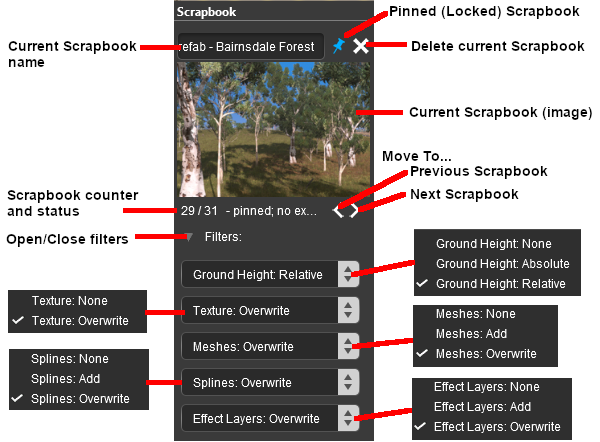 |
|
|||||||||||||||||||||||||||||||||||||||||||
Edit Effect Layers...
When this Target is selected, the Edit Effect Layers options will appear. This is the same as selecting Edit Effect Layers ... from the Trainz Edit Menu.
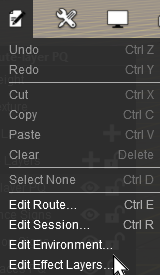 |
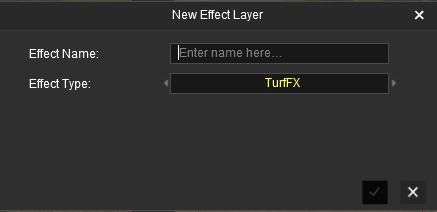 |
 |
 |
More information on creating and editing Effect Layers can be found on the Trainz Wiki at:- |
The Placement Tool
The Placement Tool is used to add assets to the route. This tool uses the Assets Palette. If this palette is not visible on the screen then refer to The first step is to identify and select the particular asset that you want to add to the route.
The Eyedropper Tool
|



